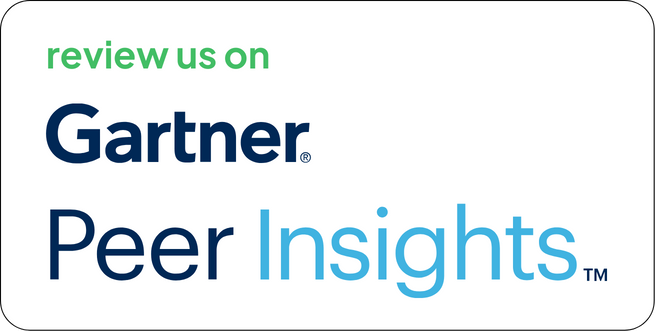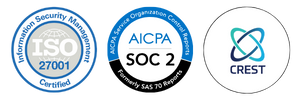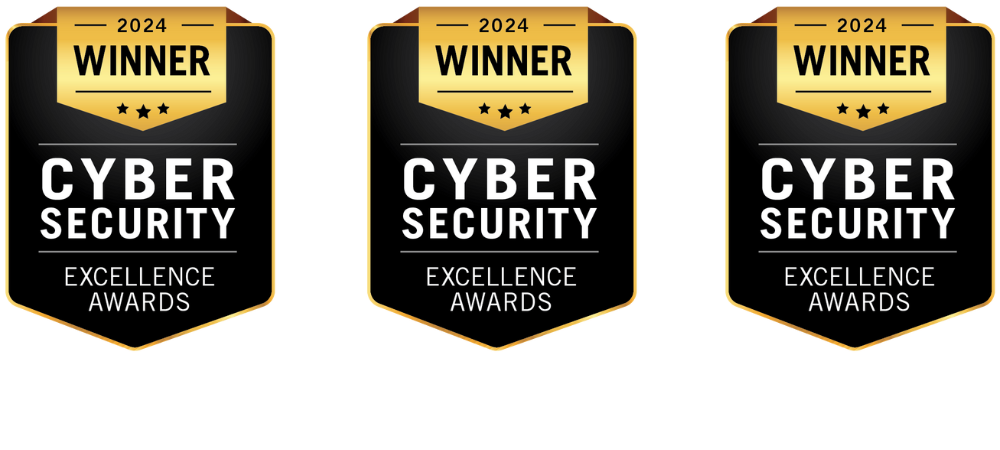Let’s face it most organizations aren’t using just one cloud provider anymore.
Maybe your dev team loves AWS. Your analytics team prefers GCP. And someone else decided Azure was better for access controls. The result? A multi-cloud setup that’s great for flexibility but a nightmare for security and it significantly expands your Multi-Cloud Attack Surface.
In fact, 89% of enterprises now operate in multi-cloud environments, according to Flexera’s 2024 State of the Cloud Report. That means assets, identities, APIs, and workloads are scattered across platforms each with its own rules, logging systems, and quirks.
And here’s the challenge: your attack surface just exploded.
You’ve now got:
- Storage buckets across three cloud providers
- APIs exposed on public IPs
- IAM roles with unclear permissions
- And maybe a few forgotten dev environments still live in production
Traditional security tools weren’t built for this. Scanners alone won’t give you the full picture. You need a way to see how everything connects and where real risk hides.
That’s where cloud pentesting comes in. It’s not about finding a long list of issues. It’s about testing how attackers would move through your cloud across providers, configurations, and trust boundaries.
Let’s unpack how it works and why it matters more than ever.
Why Pentesting is Essential for Multi-Cloud Security?
Penetration testing (pentesting) is a proactive security practice where ethical hackers simulate real-world attacks against your cloud infrastructure to uncover vulnerabilities before malicious actors do. In multi-cloud environments, pentesting is crucial because:
- It identifies misconfigurations and weaknesses unique to each cloud provider.
- It tests the effectiveness of cross-platform IAM and access controls.
- It validates the security of APIs and integrations connecting your cloud assets.
- It helps ensure compliance with regulatory standards and internal policies.
- It provides actionable insights to prioritize remediation and reduce risk exposure.
Pentesting is not a one-size-fits-all exercise. Cloud-specific pentesting requires deep knowledge of each provider’s architecture, the shared responsibility model, and the unique risks posed by services such as serverless functions, containers, and managed databases.
That’s why pentesting isn’t optional anymore in a multi-cloud setup. It’s essential.
1. You’re Managing Complexity, Not Just Resources
In traditional IT, you had one data center. One perimeter. One toolchain. Now, you’ve got:
- Compute in AWS
- Identity in Azure
- Data pipelines in GCP
- Dozens of microservices spread across regions
All these moving parts talk to each other. But not always securely.
A pentest helps you understand:
- What’s exposed publicly (and shouldn’t be)
- What misconfigurations could attackers exploit?
- How isolated or connected your services truly are
It reveals the interplay between assets, not just whether they’re “secure” on paper.
2. Most Security Tools Work in Silos
You might have CSPM tools running. You may even have decent logging in each cloud. But here’s the problem: those tools are designed to look inward, not across. Let’s say AWS flags an overly permissive IAM role. Azure finds an open port on a VM. Individually? You fix them.
But a pentester might discover this:
- That AWS IAM role lets attackers assume a role in Azure
- The Azure VM connects to a misconfigured API on GCP
- That API pulls secrets from a dev database with no logging enabled
That’s how attackers think: not in silos, but in chains.
Pentesting brings the attacker’s logic into your security workflow.
3. Configuration Drift Is Real and It’s a Silent Killer
Let’s talk about the day-to-day.
Your dev teams push updates constantly. Infrastructure changes happen through IaC. Someone disables logging “just for testing.” Another team spins up a temporary database but never takes it down.
None of this gets caught unless you’re looking right now.
That’s why a pentest isn’t just a quarterly checkbox. It needs to be:
- Continuous
- Context-aware
- Integrated into your SDLC and DevOps cycle
Because by the time your next audit comes around, that exposure might’ve already been weaponized.
4. Identity and Permissions Are the New Perimeter
Here’s what attackers really love: over-permissioned roles, tokens, and keys.
In the cloud, access is granted through:
- IAM roles and policies
- Temporary tokens and service accounts
- Federated trust relationships
One wrong configuration, and an attacker gets keys to everything.
A pentester simulates that risk:
- Can this GCP token access AWS services?
- Can a Lambda function escalate its role to admin?
- Can misconfigured trust policies allow lateral movement across clouds?
These are the kinds of non-obvious paths that aren’t flagged by scanners, but are gold for attackers.
Pentesters walk those paths before the bad guys do.
5. Pentesting Turns Possibilities Into Proof
There’s a big difference between “this might be risky” and “this can be breached right now.”
Security teams deal with a flood of alerts and false positives. Pentesting gives you:
- Clarity on what’s actually exploitable
- Context on how that risk could unfold
- Confidence to prioritize what matters
It turns security from reactive guesswork into proactive decision-making.
6. Compliance Doesn’t Equal Security
Your cloud environments might pass SOC 2, ISO 27001, or PCI audits. That’s great.
But attackers don’t care if you check compliance boxes. They care if they can:
- Find an open API
- Exploit a weak identity policy
- Chain misconfigurations across clouds
A pentest looks at your cloud the way a real adversary would. Not based on policies, but based on opportunity.
What Is a Multi-Cloud Attack Surface?
Your multi-cloud attack surface is every digital doorway, weak spot, and exposed edge across all the cloud platforms your teams use. It includes anything that could be touched or exploited by an attacker, whether you know about it or not.
Now imagine this spread across:
- AWS for compute
- Azure for identity
- GCP for analytics
- And maybe a few rogue dev environments on the side
Each cloud brings its own services, configurations, and quirks. And each one adds to the surface area you need to defend.
Here are some real world examples of what that attack surface includes:
- Public APIs that weren’t meant to be exposed
- Open S3 buckets or Azure Blobs with sensitive data
- Misconfigured IAM roles are giving far more access than intended
- Forgotten subdomains still resolving to cloud-hosted apps
And here’s where it gets tricky:
- Shadow cloud assets: Services spun up by teams without security oversight. You can’t protect what you don’t see.
- Configuration drift: What starts as secure drifts over time. A minor change today creates a major risk tomorrow.
- Identity sprawl: Too many users, roles, and permissions scattered across different clouds. No centralized control, just chaos.
Steps to Tame Your Multi-Cloud Attack Surface
1. Develop a Unified Security Strategy
- Conduct risk assessments tailored to each cloud provider.
- Establish standardized security policies and governance frameworks that apply across all platforms.
- Regularly review and update your security posture as your cloud footprint evolves.
2. Strengthen Identity and Access Management (IAM)
- Implement robust IAM solutions with single sign-on (SSO), multi-factor authentication (MFA), and role-based access control (RBAC).
- Regularly audit permissions to ensure least privilege access.
Also Read: Why Your Business Needs a Robust Malware Defense Strategy
3. ASM-Driven Asset Discovery
The first step is to map your entire cloud footprint across all providers, accounts, subscriptions, and regions. This means:
- Discovering public-facing assets like domains, APIs, storage buckets, load balancers
- Identifying internal services, databases, serverless functions, and containers
- Tracking shadow IT those unmanaged or unknown services spun up by various teams
4. Perform Regular Cloud Pentesting
- Use a mix of automated tools (Nmap, Metasploit, Burp Suite) and manual testing to uncover vulnerabilities.
- Focus on common cloud attack vectors, including misconfigurations, exposed APIs, privilege escalation, and cloud-specific services.
- Align pentesting efforts with the shared responsibility model to clarify which risks are within your control.
5. Integrate Security into DevOps (DevSecOps)
- Automate security testing in CI/CD pipelines to catch vulnerabilities early.
- Foster collaboration between development, operations, and security teams.
6. Monitor Continuously and Respond Rapidly
- Deploy advanced threat protection tools leveraging AI and real-time analytics.
- Establish incident response plans to quickly contain and remediate breaches.
How Pentesting Supports Compliance in Multi-Cloud
Compliance frameworks like SOC 2, PCI-DSS, and ISO 27001 are non-negotiable for many businesses, yet navigating their requirements across disparate cloud environments can feel like an insurmountable task. This is where multi-cloud penetration testing emerges as a powerful ally, bridging the gap between security practice and compliance evidence.
A well-executed pentest does more than just uncover vulnerabilities; it generates an invaluable, verifiable evidence trail that directly maps to the controls mandated by various compliance standards. Far from being a separate burden, integrating pentesting into your multi-cloud security strategy can significantly streamline your compliance efforts and reduce audit fatigue.
Mapping Test Results to Key Compliance Frameworks
One of the most significant benefits of multi-cloud pentesting is its ability to provide tangible proof of your security posture, directly applicable to critical compliance mandates. Let’s explore how pentest results align with some of the most common frameworks:
1. SOC 2 (Service Organization Control 2)
SOC 2 reports focus on the security, availability, processing integrity, confidentiality, and privacy of data in a service organization. Penetration testing directly supports the “Security” principle (Common Criteria), which is often mandatory.
How Pentesting Helps:
- Control Environment: By identifying vulnerabilities, pentests demonstrate a proactive approach to risk management and the effectiveness of your security control environment. The lack of severe findings or the diligent remediation of them provides strong evidence of a robust security posture.
- Risk Assessment: Pentests serve as a crucial component of your ongoing risk assessment process, identifying actual threats and vulnerabilities in your multi-cloud environment that might otherwise be missed. The report itself details the identified risks.
- Information & Communication: The detailed findings from a pentest, along with remediation plans, are essential for communicating security risks and the effectiveness of controls to management and relevant personnel.
- Monitoring Activities: Regular pentesting acts as an independent verification of your continuous monitoring activities, validating that your security tools and processes are indeed identifying and preventing attacks.
- Multi-Cloud Specific: A multi-cloud pentest explicitly addresses the security controls across your integrated environments (e.g., how data moves between AWS and Azure), directly validating your controls in the complex scenarios that SOC 2 demands.
2. PCI DSS (Payment Card Industry Data Security Standard)
PCI DSS applies to all entities that store, process, or transmit cardholder data. Requirement 11.3 explicitly mandates external and internal penetration testing.
How Pentesting Helps:
- External Penetration Testing: Directly fulfilled by external pentests, which simulate attacks from outside your multi-cloud network, targeting public-facing components like web applications, APIs, and network perimeters in AWS, Azure, and GCP.
- Internal Penetration Testing: Addresses by internal pentests, simulating an attack from within your multi-cloud environment, assessing the effectiveness of internal segmentation, access controls, and the ability to pivot between different cloud segments or even different cloud providers.
- Segmentation Testing: Pentesting is crucial for validating network segmentation, ensuring that cardholder data environments (CDEs) are adequately isolated from non-CDEs across your multi-cloud infrastructure. Attackers will try to breach this segmentation by pivoting from less secure cloud zones.
- Application Layer Penetration Testing: Specifically met by application pentesting that targets web applications and APIs handling cardholder data, regardless of which cloud they are hosted on.
- Multi-Cloud Specific: Pentests reveal how an attacker could leverage a misconfiguration in one cloud to gain access to CDEs in another, or how data transit between cloud payment processing services could be intercepted or manipulated.
3. ISO 27001 (Information Security Management System)
ISO 27001 provides a framework for an Information Security Management System (ISMS). While it doesn’t mandate specific controls, Annex A outlines a comprehensive set of controls that organizations can choose to implement.
How Pentesting Helps:
- Management of Technical Vulnerabilities: Pentesting is a primary method for identifying technical vulnerabilities in your multi-cloud systems and applications, supporting the proactive management and remediation of these flaws.
- System Security Testing: Directly aligns with the requirement for conducting security testing, including penetration testing, to ensure that security functions and controls are operating effectively in the multi-cloud environment.
- Independent Review of Information Security: An external pentest provides an independent assessment of your multi-cloud security controls, offering an objective view that can be used to demonstrate compliance.
- Multi-Cloud Specific: The broad scope of ISO 27001 allows for pentesting to address security across your entire multi-cloud estate, including how data is protected in transit and at rest across different cloud providers, and how access controls are uniformly applied.
4. HIPAA (Health Insurance Portability and Accountability Act) & GDPR (General Data Protection Regulation)
While not as prescriptive about penetration testing as PCI DSS, these regulations mandate robust security practices and risk assessments to protect sensitive data (PHI for HIPAA, personal data for GDPR).
How Pentesting Helps:
- HIPAA Security Rule (164.308(a)(1)(ii)(A) – Risk Analysis): Pentesting is a critical component of a comprehensive risk analysis, identifying potential threats and vulnerabilities to Protected Health Information (PHI) stored or processed in multi-cloud environments.
- GDPR (Article 32 – Security of Processing): Pentesting demonstrates that organizations have implemented “appropriate technical and organizational measures to ensure a level of security appropriate to the risk,” including the ability to test, assess, and evaluate the effectiveness of technical measures.
- Multi-Cloud Specific: Pentests help identify how PHI or personal data might be exposed or mishandled due to misconfigurations or weak access controls across different cloud providers, ensuring compliance with data residency and security requirements.
Final words
Cloud doesn’t simplify security, it multiplies it. The Multi-Cloud Attack Surface grows with every new service, region, and provider. Security testing, when adapted for the realities of multi-cloud, helps you regain visibility, validate controls, and prioritize remediation with confidence. Treat pentesting as an embedded, continuous function in your cloud security lifecycle, not just a one-off checkbox.
Cloud doesn’t simplify security, it multiplies it. The attack surface grows with every new service, region, and provider. Security testing, when adapted for the realities of multi-cloud, helps you regain visibility, validate controls, and prioritize remediation with confidence. Treat pentesting as an embedded, continuous function in your cloud security lifecycle, not just a one-off checkbox.
Explore how Strobes’ PTaaS platform delivers full-stack cloud and application pentesting in real time. Book a demo with us.









